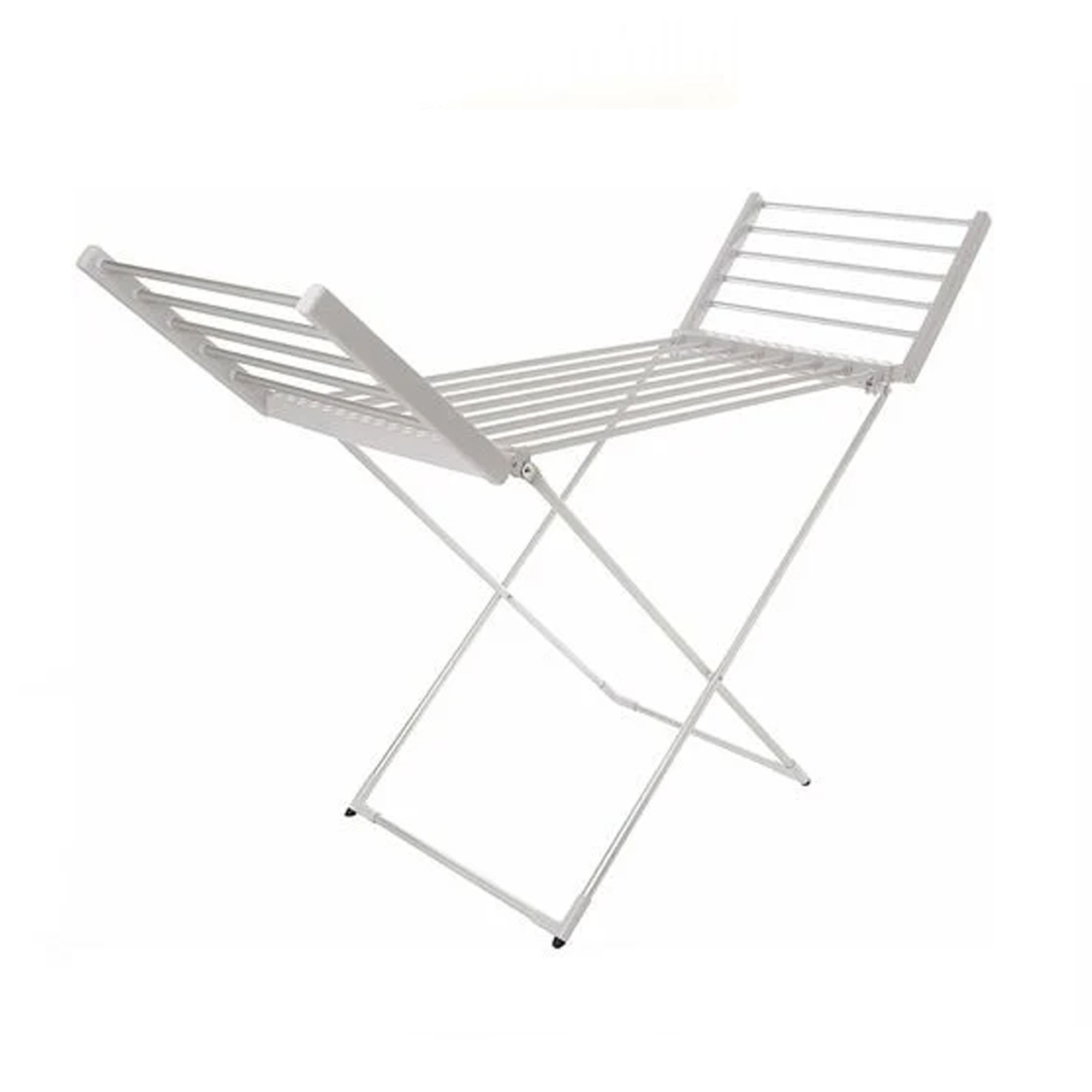How do you use a heated clothes airer effectively? Quick and easy tips to get the most out of this trusty appliance
If you look after your heated clothes airer, it’ll look after you


If you’re looking to buy a heated clothes airer for the first time or struggling to get to grips with your new purchase, you may be wondering: how do you use a heated clothes airer effectively? Well, you’re asking yourselves all of the right questions.
Although we swear by the best heated clothes airers at Ideal Home, we also know that they can be tricky. It’s incredibly easy to make heated clothes airer mistakes, and you can often feel as though you’ve wasted your money (trust me, I almost sent mine back for that exact reason). But a little bit of research and education can go a long way when it comes to this trusty appliance.
The more you get to grips with heated clothes airers, the more you’ll understand that they provide one of the best ways to dry clothes quickly without a tumble dryer and dry clothes in winter- and now I wouldn’t be without mine. So, you just need to follow these steps to use a heated clothes airer effectively.
1. Choose and check your airer

When you think of heated clothes airers, you might immediately think of those that look like traditional airers - but with a cord and some extra buttons on them. But it’s important to understand that there are a couple of different heated clothes airers out there.
Of course, you have the classic option like the Dry:Soon Mini 3-Tier Heated Airer from Lakeland, but you also have heated drying pods like the JML DriBUDDI Heated Indoor Airer from Argos or the Minky Sure Dri Heat Pod Drying System from Amazon which turns a standard clothes airer into a heated one.
All of these models come with their own quirks and features, so it’s best to choose one that suits the size of your family - and how you want to use it.
For example, heating and energy expert Nicholas Auckland at Trade Radiators says, ‘You can utilise built-in timers and automatic shut-off features. Some heated airers will also have a cover to keep the heat in for this heated airer to work at optimal capacity.’
Sign up to our newsletter for style inspiration, real homes, project and garden advice and shopping know-how
Even if you don’t buy a new heated clothes airer, though, it’s still a good idea to give your airer a once-over before turning it on. Check the connections, inspect all of the wires, and give it a little wipe-over to remove any lingering dust.
2. Time your wash perfectly
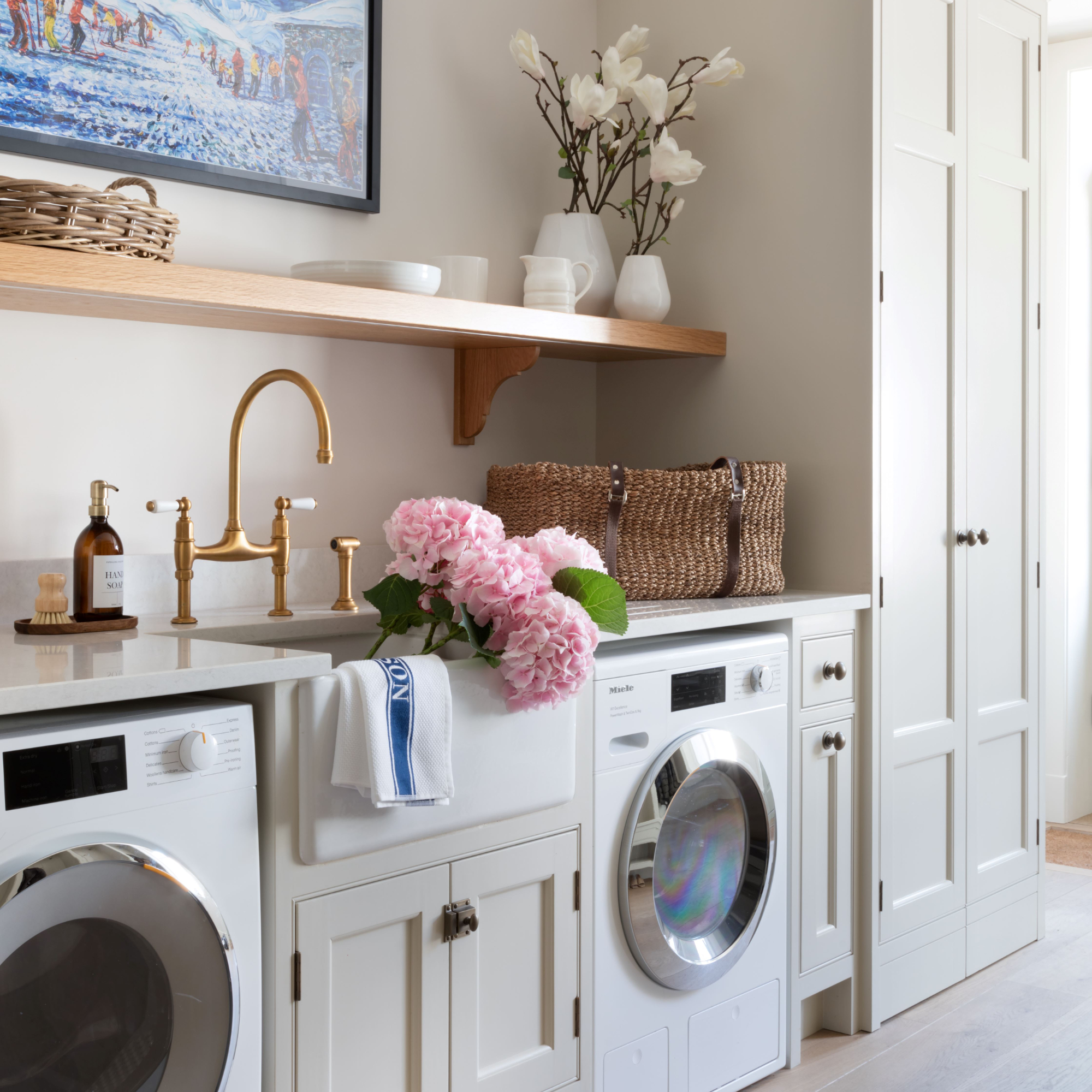
One of the downsides of heated airers is that they can be bulky, and they can often get in the way - especially if you have limited space in your home. Because of this, it’s best to time your wash perfectly so you can use your heated airer at the opportune time.
As most experts would advise against leaving a heated airer on while you’re out of the house, it might be worth your while to wash a load of laundry when you get home from work and then leave your heated airer on overnight.
This way, you’ll wake up to a dry rack of clothes and the airer won’t get in the way of any daily activities. Just remember to take precautions when leaving a heated airer on overnight, and double-check that your model complies with UK safety standards.
Of course, if you do have the ability to pop it on during the day, this is always better than leaving it on overnight.
3. Give your washing an extra spin

Although you can simply dump a load of wet washing onto your heated airer and wait for it to work its magic, it will take significantly longer to dry. And while the cost to run a heated clothes airer won’t break the bank, you probably still want to keep costs down.
So, experts all agree that you should give your washing an extra spin before loading it onto your heated clothes airer. Ben Slater from Online-Bedrooms, explains, ‘Adding an extra 10-minute spin to the washing machine is considerably cheaper than using the tumble dryer.’
‘It will remove extra water build-up, meaning not only will the clothes dry quicker, but you won’t be hanging soaking wet clothes in your home,’ he adds.
And while you’re waiting for your washing machine to finish this extra spin, you can move on to the next step.
4. Find the perfect drying location
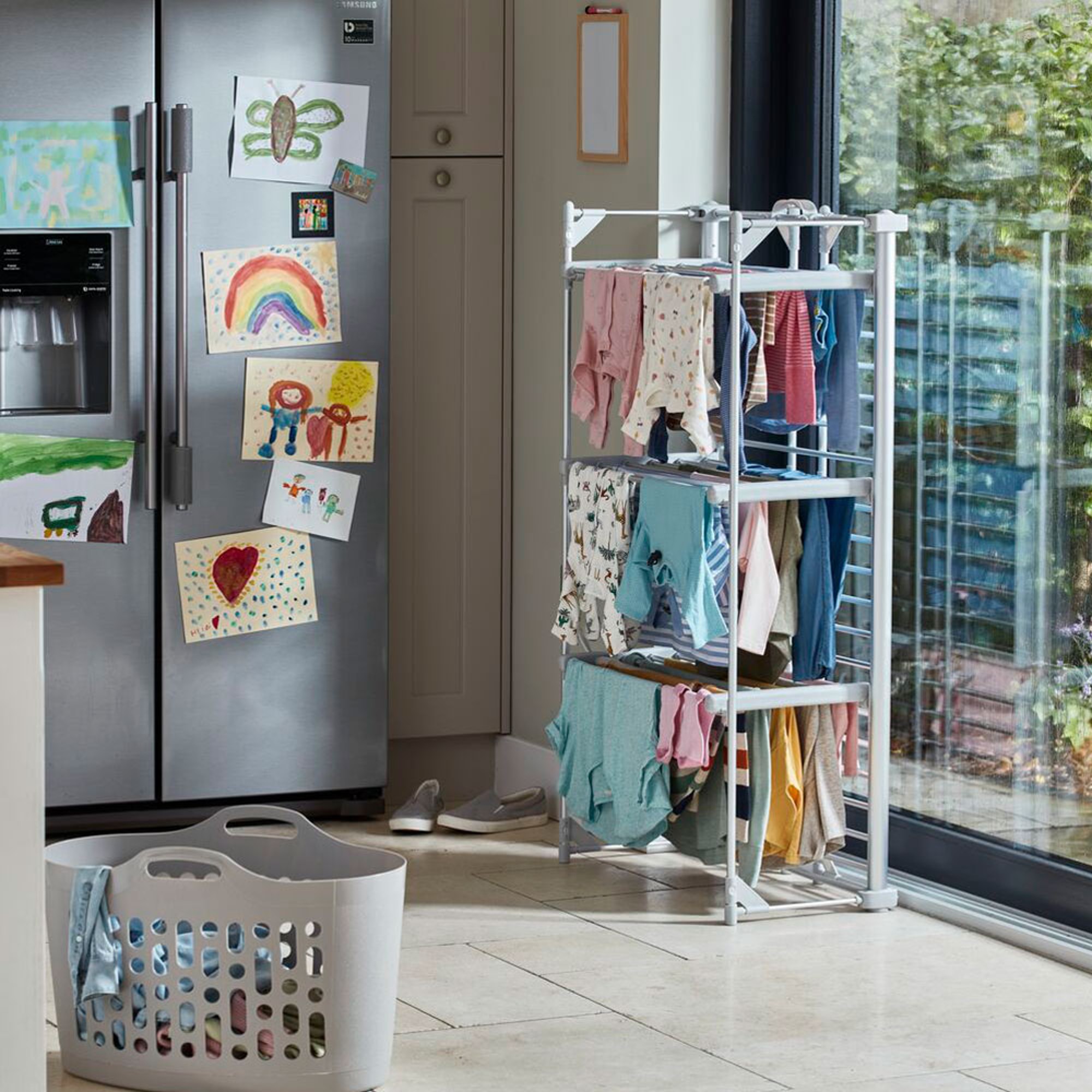
If you want to use a heated clothes airer effectively, you need to find the perfect drying location. And while you might shove your airer out of the way of your main living area, it’s essential that you choose the right place if you want to avoid damp buildup.
Nicholas says, ‘Use in a well-ventilated room. This will prevent any condensation build-up, which would lead to mould and mildew within the home. This could be dangerous in terms of health, as well as costly to repair/remove once it's spread.’
Ideally, you should also place your heated clothes airer in the middle of the room so it won’t create any pockets of dampness in the corners. This will also ensure the air flows evenly over the airer and your clothes.
5. Load it strategically

When the extra spin has finished, and your clothes are ready to be hung on the heated clothes airer, you can then start loading them up. Just remember that some clothes - like delicate silks or cashmere - should never be put on a heated clothes airer as this may damage the fibres.
When placing your clothes on a heated clothes airer, you should also be wary of overloading it. Doing this is an extremely ineffective way to use a heated clothes airer, and won’t provide you with the results you’re looking for.
‘This can lead to slow, uneven drying and even potential damage to the appliance,’ explains Nicholas. ‘Leave space in between clothing as this will ensure a steady airflow and therefore dry clothes faster.’
In some cases, this may mean that you have to do smaller loads of washing or utilise other methods of drying clothes - like using radiator airers or creating a designated drying space in your house.
6. Use a dehumidifier, too
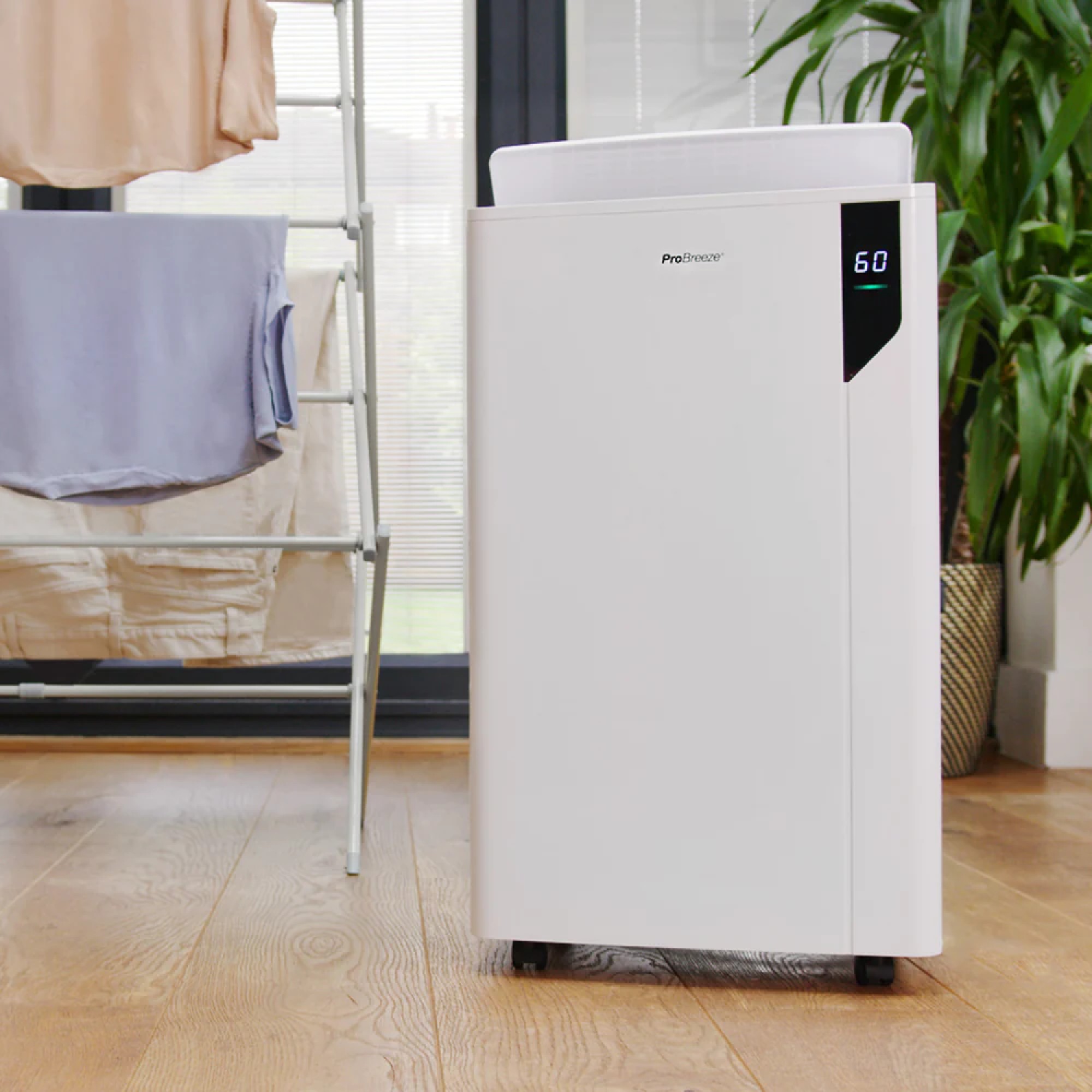
In the heated clothes airer vs dehumidifier debate, there’s one clear winner - and that’s both of them at the same time. And while you might typically associate the best dehumidifiers with bringing down the humidity of a room, a dehumidifier can dry your clothes, too.
'A dehumidifier is a great solution to speed up the drying of washing indoors,' agrees Chris Michael, Managing Director at Meaco. ‘'Many dehumidifiers have 'Laundry' modes, which is a setting that sees the unit run for six hours at full speed.’
He adds, 'This is typically how long is required to dry an average load of wet washing. The dehumidifier will then switch itself off to save electricity.'
However, you shouldn’t need to have it on for that long if you’re using a dehumidifier alongside a heated clothes airer. Using both at the same time should actually significantly reduce how long it takes for your clothes to dry.
Just make sure you know what size dehumidifier you need to dry clothes.
7. Clean it after every use
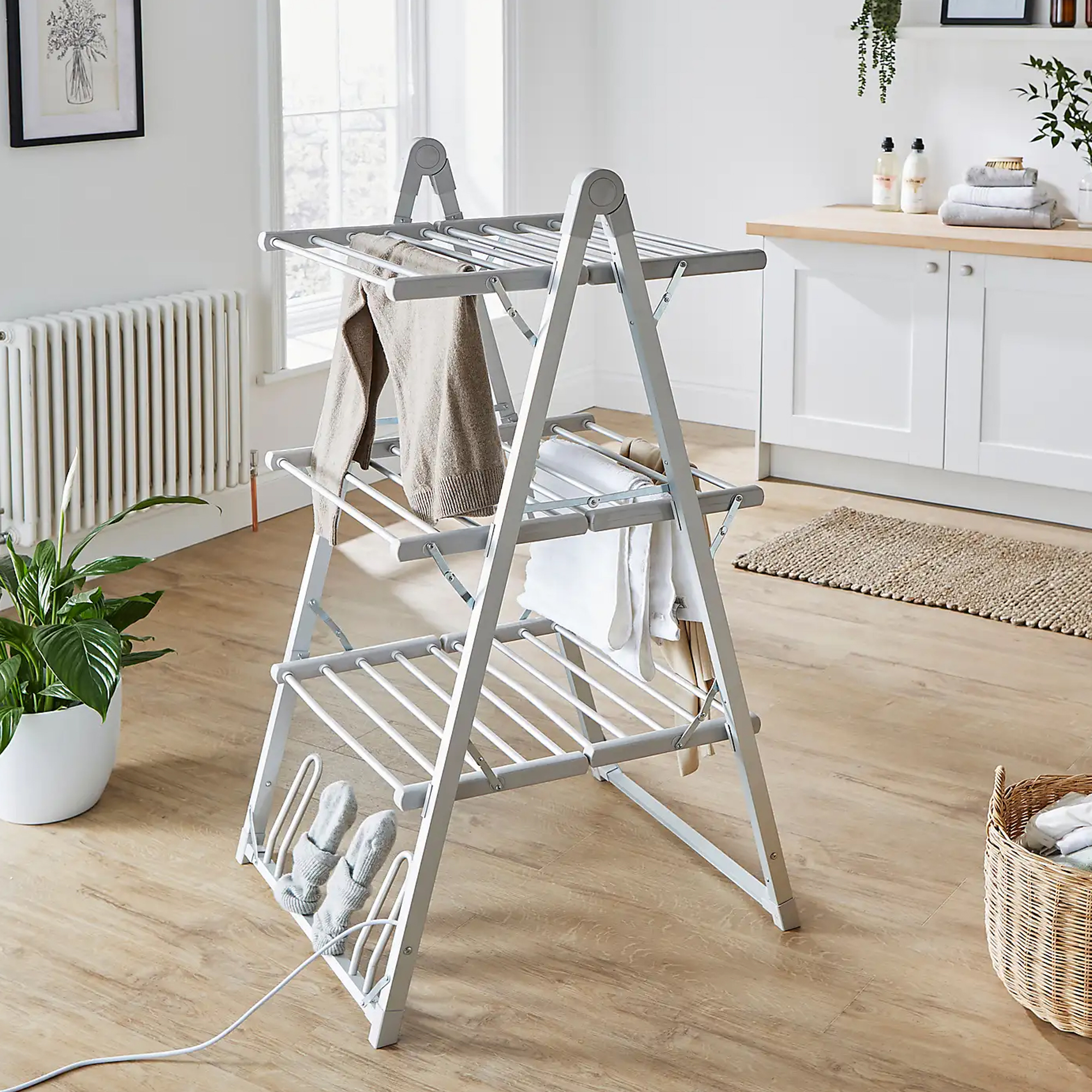
When was the last time you cleaned your heated clothes airer? There’s a high chance that you don’t remember - and it may even be the case that you’ve never cleaned your heated airer.
Well, if you want to use a heated clothes airer effectively, you should get in the habit of cleaning it after every use. You don’t need any special tools for this, as you can simply grab a damp cloth and wipe it down (when you’ve turned the area off and it’s cooled down, of course).
Nicholas echoes this, stating, ‘Keeping the airer clean and free of lint and dust build-up will ensure optimal performance as well as safe usage.’
8. Store it properly

Heated clothes airers are not cheap, which is why you should do everything you can to look after them. And this includes proper storage.
There’s not a specific art to storing a heated clothes airer as you should ultimately find a space that works for you, your home, and your daily life. But it’s important to store it in a way that won’t cause any damage to your airer.
If you don’t, you risk damaging your airer beyond repair or causing an electrical hazard. So, we’d suggest choosing a heated airer that comes with a storage bag or finding a designated home for your airer where it won’t be disturbed or damaged.
Our favourite heated airers
FAQs
How long should you leave a heated airer on for?
You should typically expect for your heated airer to dry your clothes in around four hours, but this could be more or less depending on the material and moisture content of the clothes and the location of the airer.
However, that’s not to say that you can only leave an airer on for that long. As most modern airers are kitted out with all of the safety features you could need, you could technically leave it on indefinitely. You should never take this for granted, though.
We wouldn’t suggest having it on for more than 12 hours though as this will hike up your energy usage and could cause damage to the appliance.
It’s also important to note that many modern heated airers come with timers, so you can always set a timer for two hours before checking on the clothes and making another decision from there.
Can you use pegs on a heated airer?
Yes, you can use pegs on a heated airer - but it’s best to use pegs that are designed for use on such an appliance. And if you buy some, they can be incredibly useful.
In fact, pegs give you the chance to hang your clothes from the rails of your airer rather than on the rails of your airer. This is ideal for smaller items such as underwear and socks and can even improve the airflow which will ultimately reduce drying time.
Now you know how to use a heated clothes airer effectively, it’s time to get drying!

Lauren Bradbury has been the Content Editor for the House Manual section since January 2025 but worked with the team as a freelancer for a year and a half before that. She graduated with a Bachelor’s degree in English and Creative Writing from the University of Chichester in 2016. Then, she dipped her toe into the world of content writing, primarily focusing on home content. After years of agency work, she decided to take the plunge and become a full-time freelancer for online publications, including Real Homes and Ideal Home, before taking on this permanent role. Now, she spends her days searching for the best decluttering and cleaning hacks and creating handy how-to guides for homeowners and renters alike, as well as testing vacuums as part of her role as the Ideal Home Certified Expert in Training on Vacuums, having spent over 110 hours testing different vacuum models to date!


